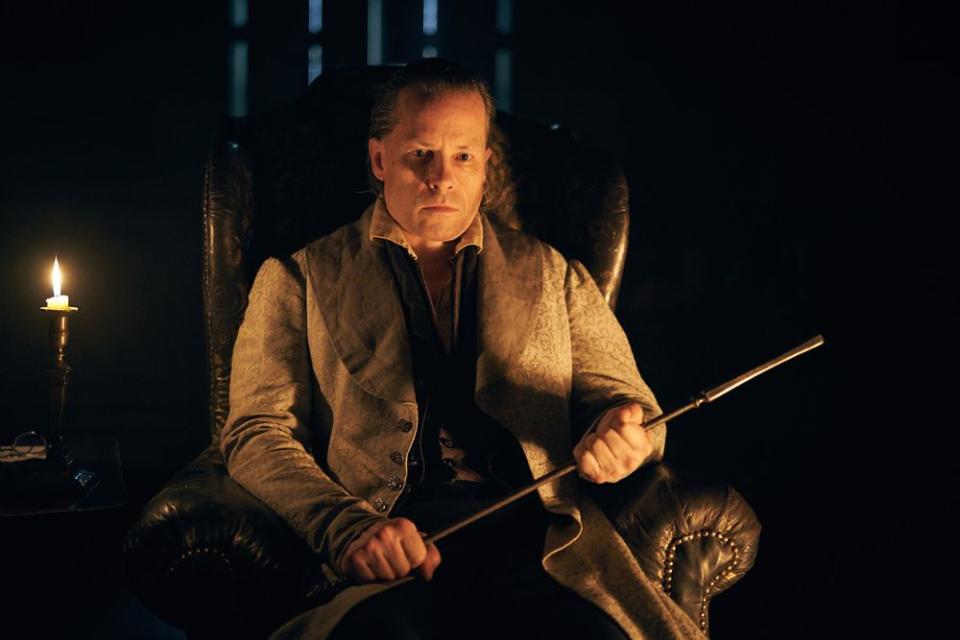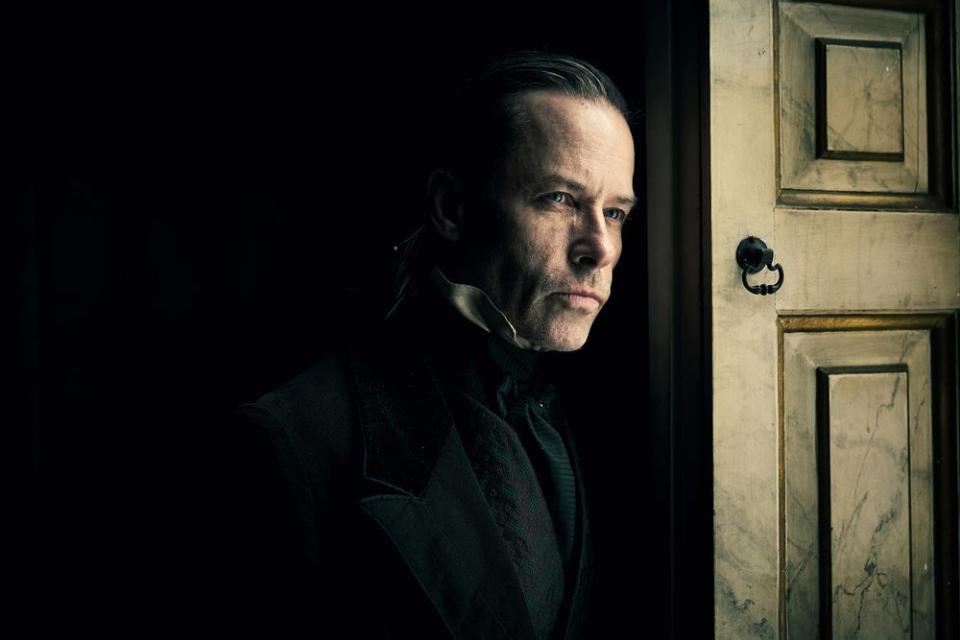The new Scrooge is hot, and I don't know how to feel: Opinion
Stick a stake of holly through my heart, I’m done. Cause of death: one Ebenezer Scrooge.
Look, I don’t want to be telling you this. Never in my wildest dreams did I expect to be attracted to the literal synonym for people who hate Christmas. But now all I want is for Scrooge to bah humbug me into the past, present, and future.
And it’s all Guy Pearce’s fault. The Australian actor plays Scrooge in FX’s new adaptation of A Christmas Carol that is altogether more grim and ghostly. In all the Christmases that have passed since Charles Dickens first created Scrooge in 1843, we’ve never seen one like this.
Typically, Scrooge is portrayed by a man several years older than Pearce and one often dressed up to look quite a bit older and more miserly than he really is. Here, though, Scrooge appears to be the same age as Pearce, 52, and more put together than we’re used to seeing the character. Don’t get me wrong — he still is in desperate need of a moisturizing routine and some new hair product. But hey, it’s Victorian London, we’ll work with what we got. At least he still has all his teeth!
And look, it’s not just me — Scrooge’s glow up is entirely intentional. “What I wanted to do was to make Ebenezer Scrooge someone who, if it weren’t for what he is and how he behaves, would be an attractive man,” writer Steven Knight (Peaky Blinders) previously told EW. “I didn’t want to make him look like his soul, because his soul is pretty wretched. But on the outside, he’s okay. I wanted the audience to say to themselves, ‘Why is this person like this?’”
The reason this is so troubling is because in the hands of this new adaptation, Scrooge is a man far further from redemption than usual. It leans hard into the Dickensian realities of the story, giving Scrooge a childhood history of sexual abuse. Taking that horrific backstory befitting a Gothic hero, it twists Scrooge’s soul into stuff far murkier than a glass of mulled wine.

Here, Scrooge is not simply a skinflint who refuses to donate to the poor and won’t give his employee a day off. No, he’s the architect of industrial disasters, including mine collapses that kill child laborers and the financial ruin of a factory. He’s also so unspeakably cruel as to sexually extort Mary Cratchit (Vinette Robinson) when she desperately needs money for surgery for Tiny Tim. He doesn’t go so far as to actually physically violate her, but he does humiliate her for the sake of proving his own twisted point that everything has a price.
Let me be clear in saying that none of this is attractive. It’s heinous behavior. A moral abdication so extreme that this adaptation doesn’t even try to offer Scrooge the merry redemption of the original novella. Because we and Scrooge both know he doesn’t deserve it. It’s hard to feel there should be any real salvation in store — even knowing the unspeakable acts that made Scrooge the unfeeling man he became.
It’s an effective tactic — men (and women) with less-than-noble aims have often charmed their way into positions of power and wealth with a pretty face. The fact that the sight of Scrooge in his dressing gown, his holiday scarf tossed carelessly across his shoulder, and his collar undone in a devil-may-care manner has me giving up the ghost (of past, present, and future) isn’t all that surprising.
How am I supposed to resist that crooked grin? (Anyone who has ever read a romance novel knows that’s guaranteed to make you weak in the knees.) It’s malevolent, a grin that comes with the callous satisfaction of denying carolers a coin, but then he bites the edge of his mouth and my Christmas goose is cooked.
The creators are toying with all of us, exposing the coal-black soul of a man who is, for all intents and purposes, conventionally attractive. A reminder that, to paraphrase Stephen Sondheim, nice-looking is different than good.

Hot Scrooge is a parable for our times: a damaged man undone by his own demons, whose finely carved cheekbones and full mouth cannot obscure the ugliness of his deeds. His attractiveness is actively and increasingly uncomfortable as we learn the full horrors of what he’s done.
The darkness here is fodder for a far more compelling story of redemption, one that asks us to consider who merits grace and what makes us truly human. In some ways, this take is probably closer to the grim realities Dickens sought to expose in so much of his writing — a tale of poverty and salvation that’s had its edges understandably softened in its evolution into a family-friendly Christmas chestnut.
The bleakness feels all the more oppressive precisely because Scrooge is such a holiday snack. We’re left to wonder how he could have gone so wrong — and how he can ever hope to come back from it.
For many, villainy, particularly in fiction, is attractive. But that’s not what’s at play here — we’re never supposed to find Scrooge’s deeds beguiling, just his face. A prospect that is both dangerously exciting and repulsive in equal measure, and one that invites the kind of soul-searching and self-examination that comes with the end of the year. Who and what do we desire and why?
In this instance, A Christmas Carol offers more questions and discomfort than answers. Hot Scrooge is a curse, but he’s also kind of a gift? So, I guess there’s nothing left to say but: god bless us, every one.
Related content:
Get a first look at Andy Serkis and Guy Pearce in FX’s A Christmas Carol miniseries
I tried ranking A Christmas Carol adaptations and it turned me into a Scrooge
A Christmas Carol on Broadway is dreary and delightful, as Dickens intended it to be: Review

